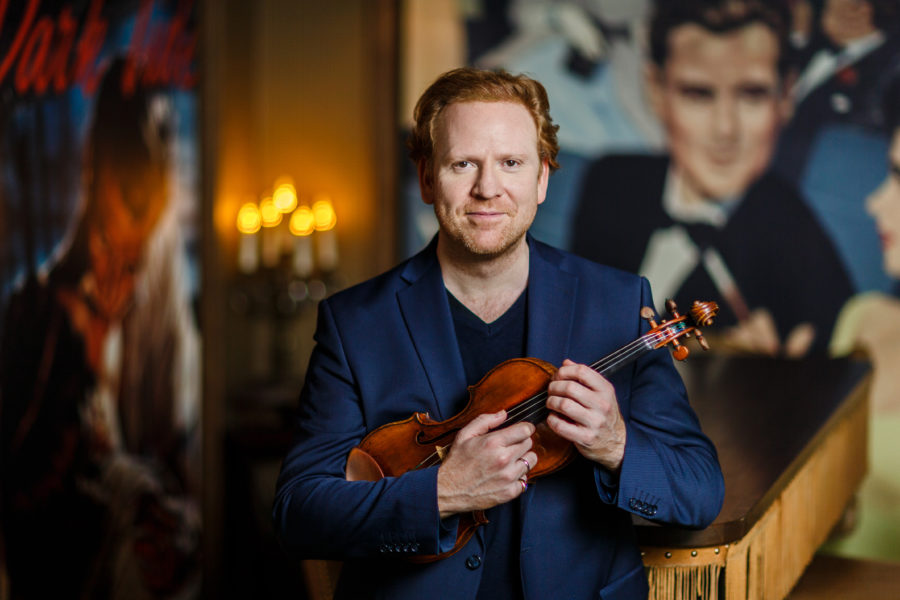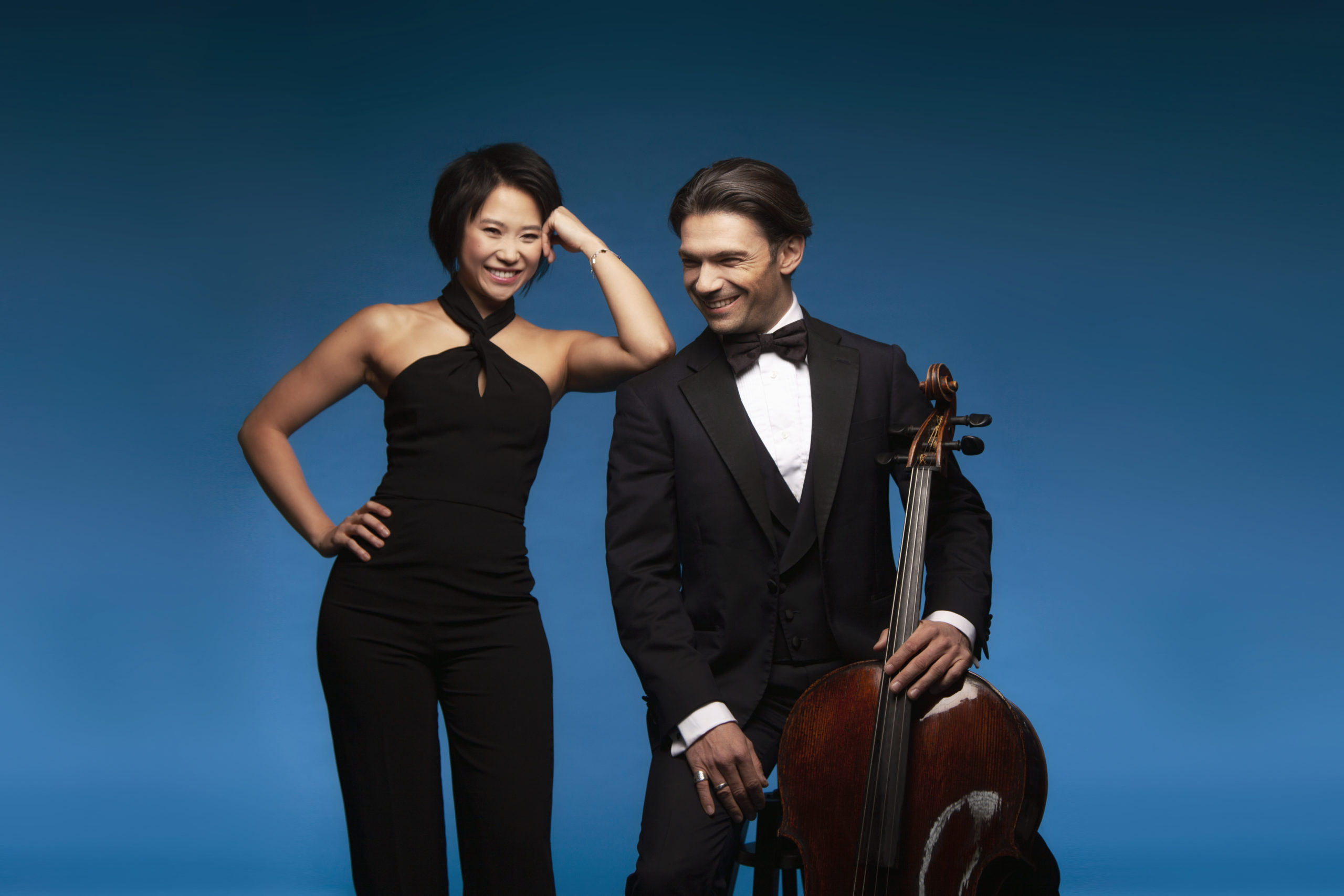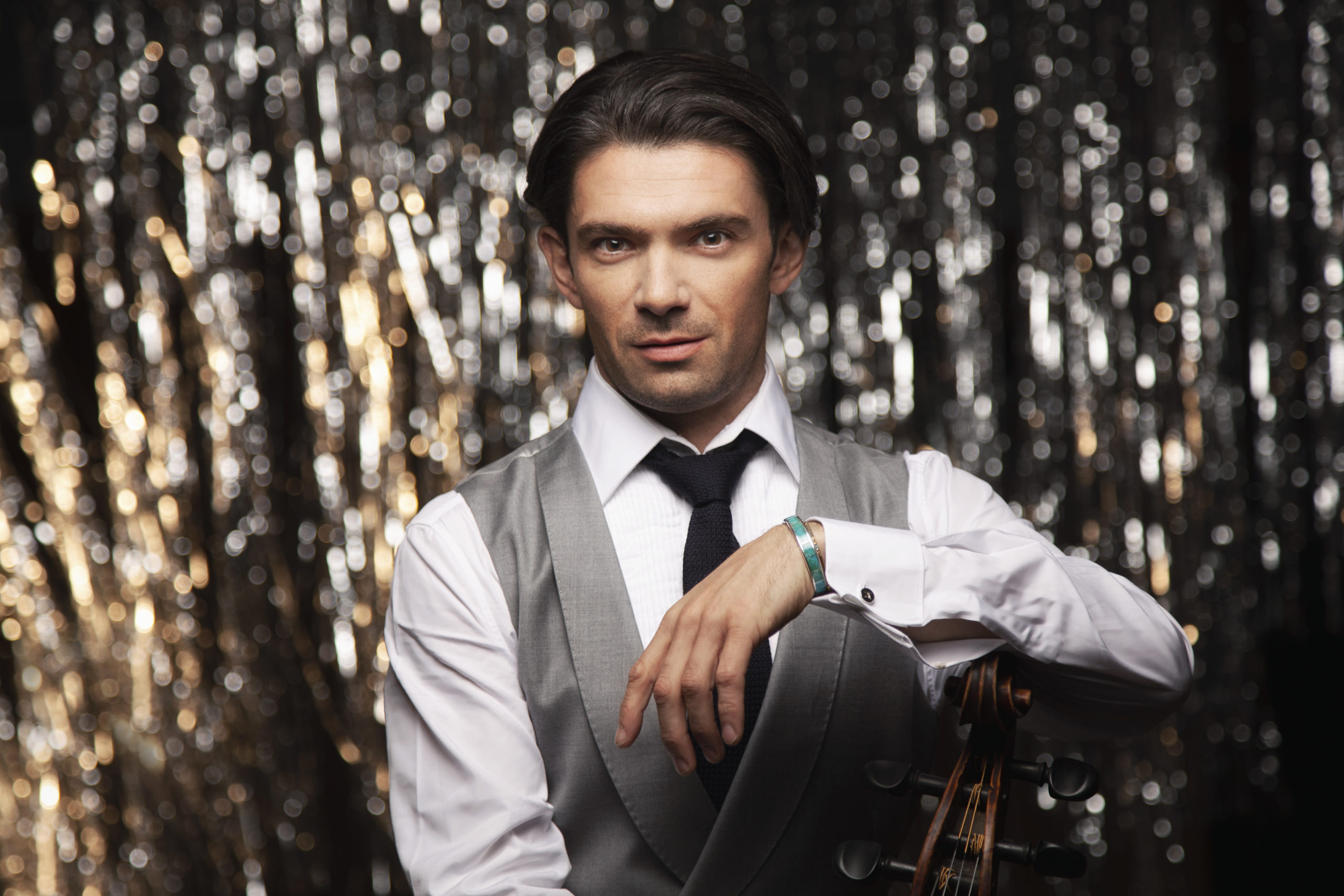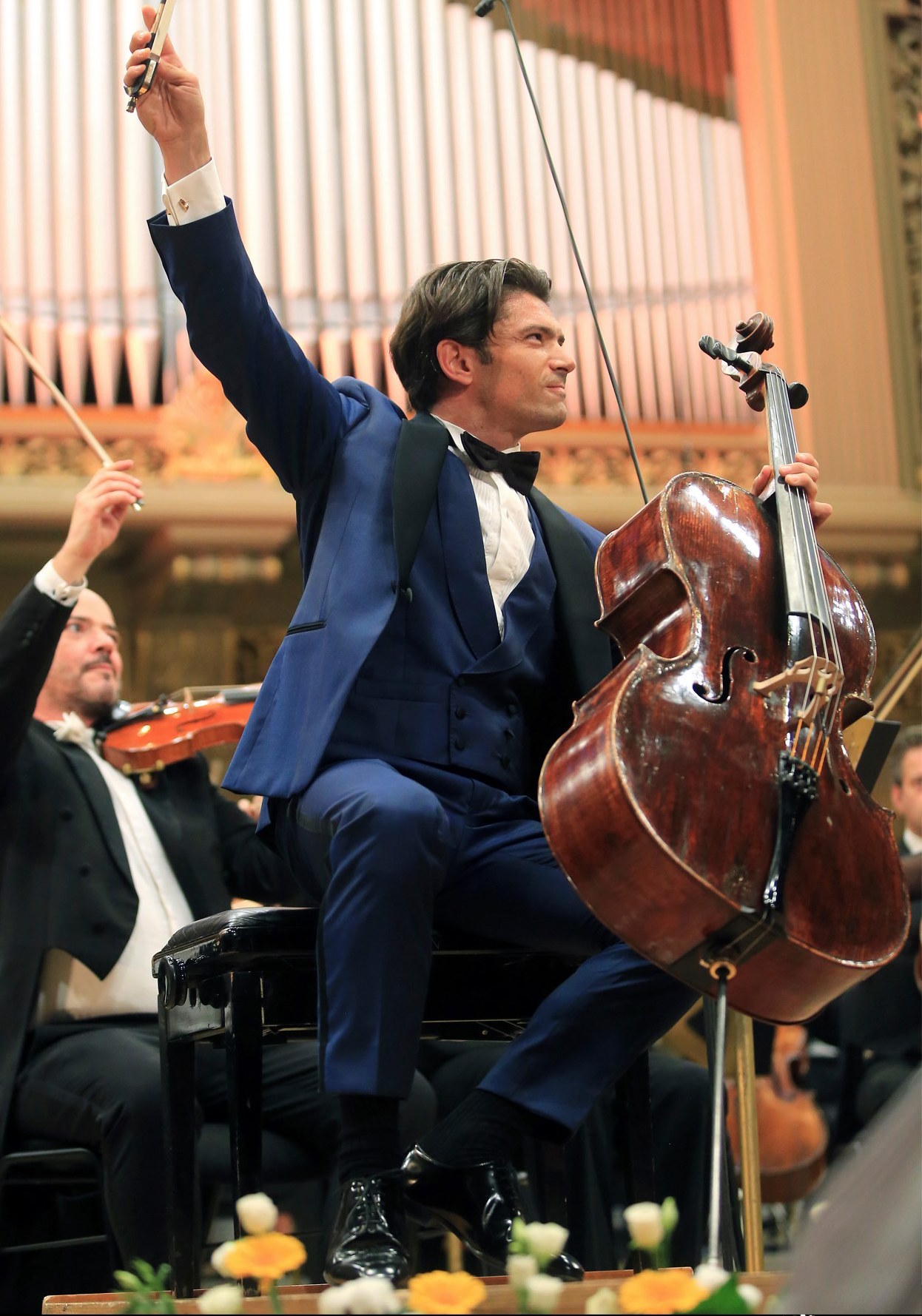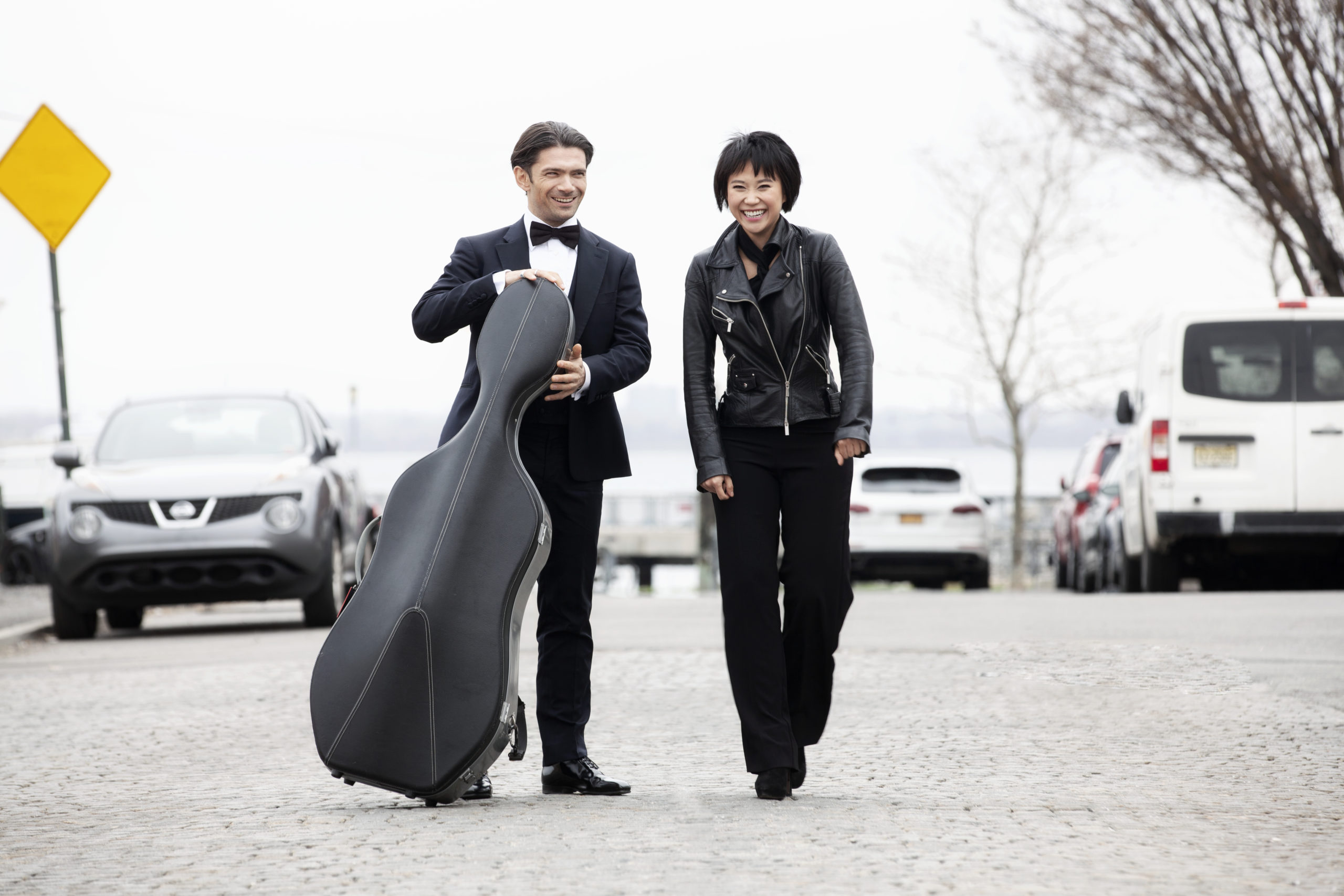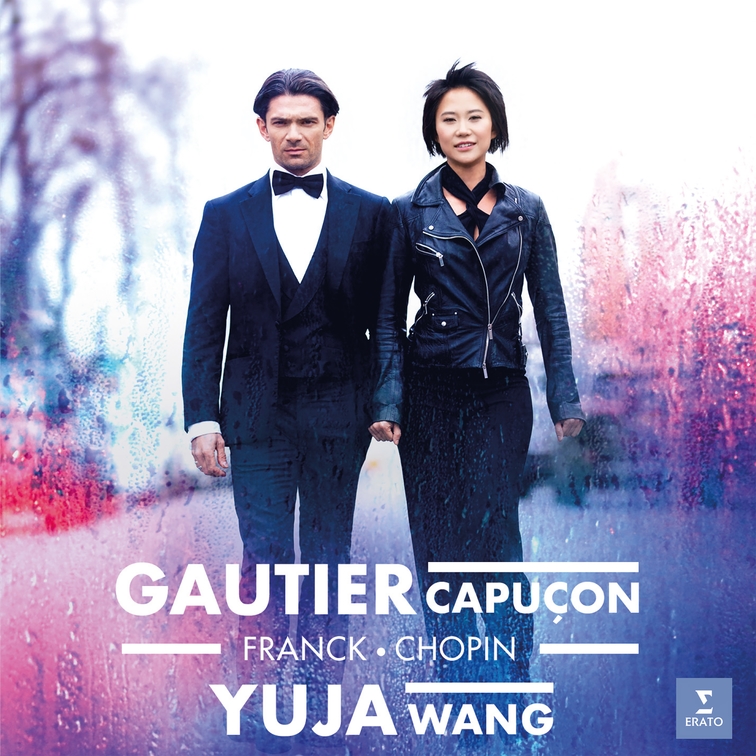Whatever good may have resulted from the unfolding experience of the coronavirus pandemic lockdown, one thing is certain: the gaping holes of arts broadcasting have been wholly, and quite hideously, revealed. Violinist Daniel Hope, together with French-German broadcaster ARTE, smartly stepped up to try and fill the tremendous programming gaps existing across so many spheres of both traditional and digital broadcasting. Taking as its model the European-style salon, Hope@Home has provided a modicum of the concert-going experience while consciously avoiding any attempted replication of pre-COVID (or so-called “normal”) formats.
I initially wrote about Hope’s program at the end of April 2020. Hope@Home began its life earlier that month in the South Africa-born violinist’s living room in Berlin. Equal parts fun, thoughtful, familiar, and surprising, each episode in the series (running roughly 30 to 45 minutes) features a mix of performance and poetry through creative chamber combinations. This is a show that is simultaneously aware of both its old(ish) roots in music and its modern presentation in medium, and it is clear-eyed in its mission to provide an ancillary form of classical experience which simultaneously educates, enlightens, and entertains. Guests have included conductors Sir Simon Rattle and Donald Runnicles, pianists Kirill Gerstein, Tamara Stefanovich, and Sebastian Knauer, opera singers Thomas Hampson, Mattias Goerne, Magdalena Kožená, and Evelina Dobračeva, and actors Ulrich Tukur, Iris Berben, Katharina Thalbach, and Daniel Brühl, many of whom performed in Hope’s own parlor. “I could never have imagined in my wildest dreams that such an eclectic bevy of artists would pass through my Berlin salon, nor that we would resurrect the age-old art of the house concert,” Hope wrote in The Guardian in early May. With over sixty episodes now, Hope@Home attracts an international, ever-expanding viewership, and has thus far enjoyed over five million views. Blending old-world charm with a 21st century sensibility is no small thing, and in so doing, Hope has, if I might add a personal note, provided some wonderful moments of comfort and company over many sad months of enforced isolation.
The program has, in parallel with the easing of European lockdown restrictions, moved to a weekends-only format, and out of Hope’s house. Now called Hope@Home On Tour!, various unique and historical locales (indoor and outdoor) across central Europe have become its sets. The July 4th broadcast featured Hope’s very own Zürcher Kammerorchester (Zürich Chamber Orchestra), of which he has been Music Director since 2016, performing in a very evocative factory setting. As well as his duties with Zürich, Hope is also President of the Beethoven-Haus Bonn, Artistic Director of the Frauenkirche Dresden, and Music Director of the New Century Chamber Orchestra in San Francisco. One senses the chamber set-up is where Hope feels most keenly at home in literal and figurative senses; the inherent intimacy of the arrangement provides a route through which the violinist clearly underlines its importance within the creative experience, together with the not-inconsiderable significance of a very human presentation. This is a program that directly addresses any lingering accusations about classical music being distant, heady, or cold; Hope@Home is none of those, and while it does wear its heart firmly on sleeve at times, it does so in elegant and thoughtful ways, immeasurably aided by the creative variety it has offered up over its three-and-a-half-month lifespan. Thus is Zürcher Kammerorchester’s early July appearance at the very tip of an ever-expanding sonic iceberg, pieces of which continue to be unearthed and examined each weekend. The sounds of jazz, swing, and folk are placed beside that of Baroque, classical, and modern, with poetry and theatre hovering close by; never has such a combination felt more right or indeed suited to the nature of the times, as notions of past and present crash and collide to provide an entirely new ways forwards.
Such variety is reflective of Hope’s own interests and oeuvre. His repertoire features the work of Schumann, Brahms, Mozart, Bach, Vivaldi, Shostakovich, Schnittke, Mendelsohn, Tippett, Hindemith, Berg, Foulds, Poulenc, Messiaen, Bartok, Ravel, and Ravi Shankar (to name a few), and he has performed at many celebrated venues including Carnegie Hall, Théâtre des Champs-Élysées, Wigmore Hall, Alte Oper Frankfurt, and the Concertgebouw. Creative collaborators and partners have included Menahem Pressler, Anne Sofie von Otter, Sebastian Knauer, and Maxim Shostakovich, conductors Kurt Masur, Christian Thielemann, Ivan Fischer, Kent Nagano, Sir Andrew Davis, Sakari Oramo, Sir Roger Norrington, Thomas Hengelbrock, Jiří Bělohlávek , and organizations The Chamber Orchestra of Europe, Konzerthaus Kammerorchester, City of Birmingham Symphony Orchestra, BBC Symphony Orchestra, the Beaux Arts Trio (of which he was a member from 2002 to 2008), Camerata Salzburg, and his very own Zürcher Kammerorchester. He recorded his latest, wide-ranging album, Belle Époque (Deutsche Grammophon, 2020), with the latter, and it reveals a fascinatingly wide selection of early 20th century sounds, all of which drive a certain narrative around navigating an immense precipice of change as much musical as social. The album skillfully blends the work of Schönberg, Massenet, Zemlinsky, Rachmaninoff, Strauss, Fauré, and renowned violinist and composer Fritz Kreisler, whose work Hope has frequently presented throughout Hope@Home, into a gripping and very evocative 150-minute listen.
Along with Kreisler, another violinist to whom Hope regularly pays tribute is Yehudi Menuhin (1916-1999). The New York-born soloist had formidable influence throughout Hope’s childhood, an accidental if highly fortunate connection thanks to his mother, who was Menuhin’s secretary for over two decades. Hope stated in an article for The Strad in 2016 (the centenary of Menuhin’s birth) that “Menuhin was the reason I became a violinist” and shared details relating to the spontaneous nature of their performance-instruction connection; it’s this precise quality, this flying-by-the-seat-of-your-pants see-if-it-sticks spirit of adventure which gave early Hope@Home episodes such unique electricity, but which, alternately, made Hope himself a calm eye in the middle of a veritable storm, a steady presence who just as easily (even now) shares stories of his days with Menuhin (and others) as he does move between works by Miklós Rózsa and Manuel de Falla, beloved tunes like “Amazing Grace”, and riffing on the folk-balladry of Berlin-based Kiwi singer Teresa Bergmann, the timbres of Hope’s violin and Bergmann’s voice twisting and turning in beautiful, hypnotizing spirals of green-gold aural splendor. Throughout its short life, Hope has also championed the works of less mainstream composers, among them Alfred Schnittke (1934-1998) and Erwin Schulhoff (1894-1942). Partly pointing up the show’s blend of education and entertainment, such emphasis also reflects Hope’s discography, as well as his family history, one intimately connected with Berlin and his Jewish roots, a past he openly shares as part and parcel of his hosting duties. There is also, vitally, humour; in one episode from late April, Hope recalled knocking on Alfred Schnittke’s door and introducing himself as a keen teenager; therein developed a friendship which lasted until Schnittke’s passing in the late 1990s.
Such combinations, of personal and broad, intimate and epic, casual boldness and the yearning for inclusion, found direct contemporary expression in Hope’s decision to include homemade musical contributions by musician-viewers in early episodes of Hope@Home. Such easy integrations equally aid in the salon ambiance of live readings, initially done in an adjoining room in Hope’s house and sometimes set to live music. Robert Wilson (whose appearance on the program was, as you’ll read, a nifty bit of luck) read his own poem about the lockdown experience set to a performance of Pärt’s “Spiegel im Spiegel”; director and Komische Oper Berlin Intendant Barrie Kosky read a passage (unaccompanied) from Joseph Roth’s The Hotel Years. Before embarking on wide-ranging locales, Hope kept his touring sites in Berlin, from whence occasional broadcasts still unfold. A visit in early June to the former residence of Hope’s grandmother (where she and her family lived until 1935) featured a 1920s-style swing presentation and was enjoyed by the small crowd who had gathered in the leafy Berlin suburb. More grand if no less intimate was a more recent broadcast from at the Strauss-Villa in Garmisch-Partenkirchen featuring baritone Thomas Hampson, who noted of the experience singing in Strauss’s home that “it’s an incredible honor… and I’m terrified.”
Despite its immense popularity, the focus remains on the original intimacy. The show’s visual style is kept purposely consistent, and Hope’s conversational performance style translates seamlessly into his sincere, unaffected deliver. Such naturalism could be owing to past broadcasting projects (including a radio show), but it’s also innately connected with his actively communicative musicality. During a concert with the Konzerthausorchester Berlin honoring Yehudi Menuhin in 2016, Hope and conductor Iván Fischer share a seamless, intense exchange throughout an electrifying performance of Elgar’s Concerto for violin and orchestra in A Minor, Op. 61. Hope’s artistry is one innately connected to communication with his musical partners, whether they’re a pianist, speaker, swing band, or chamber orchestra; this need for communication, and its inherent sincerity, translates palpably to Hope@Home, no small thing in an era that has come to rely more and more on digital broadcast. Hope and I had the opportunity to speak recently, just after he had completed two long-awaited post-lockdown concerts with Zürcher Kammerorchester.
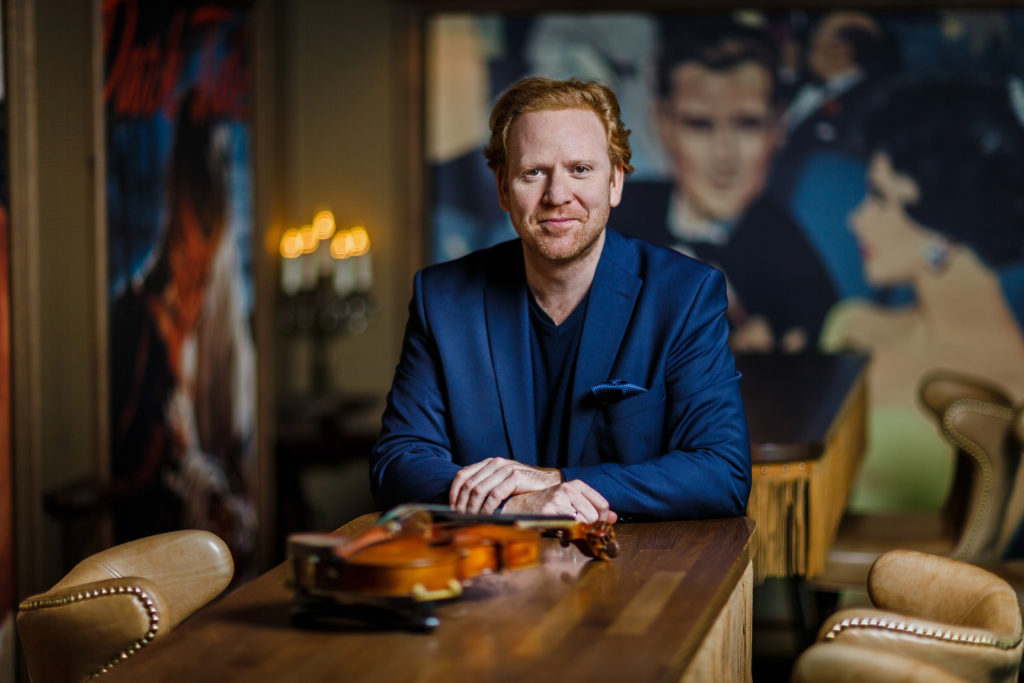
Photo © Nicolas Zonvi
How did Hope@Home happen?
I had a conversation with Wolfgang Bergmann who is the German head of ARTE. (Bergmann’s official title is Managing Director, ARTE Deutschland and ARTE Coordinator of the ZDF.) I’ve known him for many years and we’ve been in touch regularly with various ideas, and we had a meeting at the beginning of March in Berlin about something else, just as things were starting to move very fast in terms of the lockdown. Once the meeting was over he said, “What will you do if a lockdown happens, if it gets serious?” I said, “I don’t know, I might turn my living room into a TV studio!” – I said it, just like that – and after about two weeks he called me up and said, “Were you serious about what you said?” I said, “I’m not sure, I might’ve been!” He said, “Let’s do it.”
And so my first question to him was: what about the sound? I’d been watching some of the (music) streams and thought, as great as they were at the beginning, they were missing really good sound quality on classical music. And he said, “How do you want to play it?” I said, “Let me speak to someone who knows about production of classical sound and we’ll see if it’s doable.” I got an engineer to come and check out if we could do it, then called Wolfgang back to let him know it was possible, but I didn’t expect him to say, “Can we start tomorrow?” That was really insane! And we threw everything together and went straight in. There was no prep, no script, no person checking – usually with these things you have a team of people writing up ideas and vetting artists and repertoire. There was nobody; there was just me. In that sense I did initiate everything, but of course with the help and the slightly mad suggestion of Mr. Bergman.
How much did that spirit of spontaneity directly influence your selections in terms of guests and repertoire?
I think partly, that very intense time was the reason behind what happened, but there were also some really wonderfully strange coincidences. I was walking with my kids around the block and bumped into Robert Wilson on the street, and was like, “What are you doing here?!” He said, “I’m in lockdown and I can’t get back to the States… and by the way, I’ve been watching your show; can I come on it?” It was just amazing! I suggested he do a reading of something, and racked my brains for things to send him. He showed up at the house an hour before the show with his own script. With Simon Rattle, I’d never met him before but got his number and texted him, and within half an hour he rang back and said, “Pick a day.” Those kinds of things would never ever have happened had there not been this severe lockdown. I would’ve never been able to reach these people and they wouldn’t have spontaneously said, “Let’s do this” – that (availability) was the key behind everything else.
And the freedom from the channel was incredible. They never said, “You can’t put a Simon and Garfunkel song next to a reading of Stefan Zweig and then play Schnittke – that’s just not possible!” I think in my mad attempt to get a show together that made sense, I thought about what kind of music I would like to hear, and then went about to see if I could draw a theme together.
The ease of movement between genres and media is refreshing; you’ve shown, however accidentally, that there is a big thirst for this kind of variety in a cultural presentation.
For a long time I read and researched a lot about the Berlin salons of the 19th century, or the French ones that hosted people like Marcel Proust, this idea, even going back to Schubert’s time, where he’d have these soirees and friends would come by and did something, anything –if they read, played, recited, danced, whatever – it was a getting-together of artistic minds and seeing what happens; that was in the back of my mind. I was sure after a couple of episodes we’d get complaints about something or the other, but because of the shutdown the structures usually in place in terms of regulating TV content were not there, so they let me run with it. One of the biggest victories was doing the whole thing in English, because it’s a German-French channel, so it would’ve normally been in German or French or both; I literally broke with all protocol and went in English, and after the first slightly irate comments from some people at the chanel, they figured out, “Oh wait, everybody speaks English…” And we went with it, because I feel most comfortable speaking English anyway. That was a big part of the success of (Hope@Home): it’s global. People can respond to it.
Noteworthy you spoke in German during your first performances with an audience at the Frauenkirche Dresden.
When we started to go outside of the house and into concert halls and started to have audiences, that was when the next big challenge came; I had an audience in front of me and the audience at home, and I think we were all a little bit anxious to see if it could work somehow, because either the people at home will feel out, or the people in the hall will feel left out, so I was juggling between them. That show in Dresden was the largest audience we’ve had to date (for Hope@Home), it was three or four hundred people, so it was important to address them in German as if it was a concert, but at the same time not to forget about the global audience at home.
https://youtu.be/6-kB3LVUkZ0
What was that like to play for a live audience after so long – was it emotional?
It was very emotional, yes. Just a couple of nights ago we played in Zürich as well, two concerts with around 450 people, approximately. It’s an extraordinary feeling, having been cut off for months, and to go to back into the hall; even if people aren’t seated next to each other and there are distances, it’s still a very different feeling when you’re communicating directly in that moment and you see and hear applause, you’re watching peoples’ faces, and you’re making music together with colleagues. Playing that chamber music repertoire was unbelievably emotional for all of us.
The experience of hearing applause from a live audience in Dresden hit me quite hard…
I bet!
… though it’s been heartening to note your being such a public champion of the work of Alfred Schnittke. I love that your program features stories like, ‘One night I just knocked on Schnittke’s door’ followed by performances of his works. You blend the personal with the so-called “high-art” of classical in a very engaging way.
Thank you for picking up on all of that. Schnittke is a huge, huge influence on me and I’ve always adored his music. After an absence of a few years I’ve really gotten back into him again. I try to tell stories; I’ve always tried to tell stories. The music is the most important story in all of that, but it’s not the only story. By connecting the dots and trying to at least illuminate the history of the pieces or the people behind them, or the dedicatees, or the messages, I think it enhances the experience. It certainly enhances my enjoyment of the music!
So it’s a gut decision really, of how much information do I want to spell out, without wishing to preach and without wishing to be sanctimonious, but trying to do a little more than, “And now I’ll play the Second Sonata in E-flat Major” – I think there’s more to it. If one knows the story of Erwin Schulhoff, for instance, I think you experience it differently; his Foxtrott, if you know this was written under a pseudonym, by a man who was close to deportation, and was forced to give up one of the greatest careers of his time – you listen differently. And listening differently, and intently, and deeper – that’s really about what we do. And that’s one of the many things I learned from Menahem Pressler in the Beaux Arts Trio, it was, dig as deep as you possibly can into the material; that musical digging is the most important, but the forensic, for me personally, is almost as interesting.
Contextualizing is so important to appreciate any sort of music, but it’s so often watered down, or presently poorly, or left off entirely.
In doing Hope@Home it was my great hope was we were not just going for classical music aficionados but would try to reach people who were locked down and who were maybe looking for culture. To get somebody to listen to an Alfred Schnittke piece who knows nothing about classical music is a challenge, and I think by telling stories and showing why we’re doing this, I wasn’t just going through a bunch of pieces or composers from A to Z, but there was a reason behind it all. A guest would come in and say, “I want this piece” or “I’ll read this text” or try to find something suited. For Rudyard Kipling’s “If” (read by actor Iris Berben), we put Manuel De Falla’s Andalusian folk songs underneath; for a Stefan Zweig reading (performed by Katja Riemann), we did Marietta’s Lied from Korngold’s Die Tote Stadt. I tried to find connections that would enhance the experience and make it accessible without wishing to, in any shape or form, take something away from the music, knowing at the end of the day we only had thirty or forty minutes to present this experience which I was hoping would reach and touch people.
https://youtu.be/ZkbZRpqNYb0
I grew up with the work of Menuhin, and that was his great gift, to contextualize these large histories in very approachable, highly enlightening ways.
Absolutely. I don’t know if you know the book he wrote, The Music Of Man…
My mother had it in her library.
Yes! It was a CBC production back in the late 1970s in which he looked at the influence of music over 500 years, which went from the Renaissance to Oscar Peterson and the people who inspired him. That kind of musical time travel is something I’ve always loved, and certainly, Menuhin’s eagerness to share that history was a great inspiration to me. I was lucky to grow up very, very close to him and to the collaborations in which he was involved. Even as a very small child, listening to him play with Ravi Shankar and Alla Rakha, the sound of those tablas and the spectacle of that giant virtuoso playing, stayed with me – but the same I can say of Carl Sagan, with whom Menuhin met in order to do this book The Music Of Man; Sagan was the man who told me about the music of the spheres when I was a kid, and that led, thirty years later, to a Spheres album (Deutsche Grammophon, 2013). So there are seeds that somehow get planted and often I come back to them, and at other times there are things, triggers – I’ll hear a radio program or an artist, or read a bit of text or a book which will start me thinking, or get me on a different journey, and sometimes those journeys can last for years before they become a project, and sometimes they happen really fast.
The interesting thing with this show is that I was thrown together with many different with artists, some of whom I’d admired for a long time but never met, and it gave me new impulses. I’d discover new pieces – I’d be feverishly looking overnight for a piece to play on the program the next day, and if it didn’t have the arrangement I needed, then I’d be getting somebody to arrange it in time. That was a creativity in overdrive, I would say.
So how has this overdrive changed you creatively then? You don’t seem to be the same artist you were back in March.
It’s a great question. I definitely feel a big change, I have to say. Those six weeks at home were some of the most intense and creative – I was literally on fire the whole time. Going from show to show, and sometimes we didn’t even know if the person was going to come, and if they did what they would do – it was fraught in that sense, but also very positive. And so I think the biggest challenge was going back to the schedule, or what’s left of it, let’s say, and trying to think, ‘Okay, there’s an inquiry to play a Mozart Concerto in four years’ time on this day; is this something you want to do?’ And I did find myself asking myself… I’m not sure if I want to do that. Because one of the greatest things about this show was and is that I’m calling up people and saying, “Can you come in two days and play?” and because they’re free they can do this – and that’s how classical music worked for centuries. If you look at the great artists at the beginning of the 20th century, the Horowitzs or Rubinsteins or even Menuhins, they’d arrive in a town, a concert would be scheduled, they’d play and wait to see the reaction, then if people liked it, they’d have another, or say, “Let’s do it again next week” – that happened with Thomas Hampson recently. I thought, ‘Wouldn’t it be great if we got him to do something?’ and I rang him up and said, “Can you come in two days’ time?” I think everything being planned three years in advance… as classical musicians we may have to lose that structure, and even security, if we’re going to survive.
The other thing is, this constant traveling, this constant being on-the-road, I think, again, there’s been a sort of reexamination of that. The fact one can actually stay at home and produce high-quality music and share it with a worldwide audience was quite a revelation to me, I have to say.
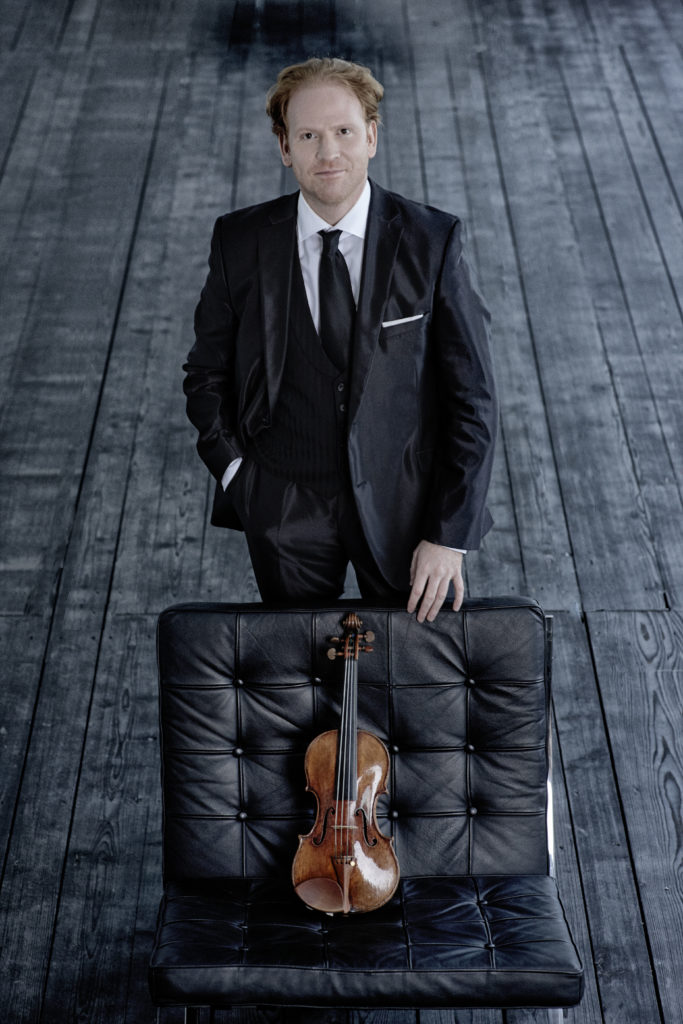
Photo ©Harald_Hoffmann
And you understood the importance of sound quality, and the value of an event in and of itself.
At the very beginning I loved the online stuff because I felt there was this giant worldwide hug – all musicians were trying to hug each other. I thought it was very uplifting. But very soon I found myself saying, ‘Well, this sounded good but this didn’t’ – and then it bothered me. Also (online streaming) became so spontaneous and so … kind of last-minute, and it lost some of the special factor of going to a concert – even just putting on a suit, you go and actually make an occasion of it. As you know we were all at home, all unable to cut our hair and able to wear what we wanted to wear – we were all forced to readjust, but for the program, I made a conscious decision. Tobias Lehmann said, “I can make the sound I know you want” and I said to Christoph (Israel), “Listen, we’re going to play concerts now; we’re not going to stream and sit there and take requests. We are making an occasion of this, and we are going to dress up because it is a concert, and we’ll see what happens.” I don’t regret that. It gave a kind of an element of escapism, which is what people were looking for, but at the same time the respect to the art form we’ve been practicing all our lives.
That’s why it was nice to see people dressed up, and it still is. And you are very natural as a host as well, there’s none of the “Daniel-is-in-his-hosting-suit-with-his-hosting-voice” routine.
I appreciate that. A lot of it was learning by doing and seeing how it would work, and trying things out, but trying to be myself, trying to be authentic. We were lucky to have the sound of Tobias, and the guests we’ve had, and lucky to have the guys on the cameras who created that look and to take the look with us when we go on the road – we take the lamps, we take the paintings. We try to give people that sense of, ‘Here we are again!’
How long will it continue?
At the moment we are pretty much sure we’re going on until the middle of August, but we’re not sure after that. At some point I will need to take a holiday, a break! It’s hard to imagine ARTE would keep this going forever, but the response has been so strong and we’re over 5 million streams. So, given the very precarious state of the world right now, as I always say, if we’re allowed to keep going, we will keep going; circumstances may change, and everybody’s talking about a second wave. Whether it will come or not, it’s in the stars right now, but if I had one wish, it would be to come to North America and do the show from there… but if it’ll happen, we just don’t know right now. I hope we will be allowed to come in at some point.
Top photo © Nicolas Zonvi

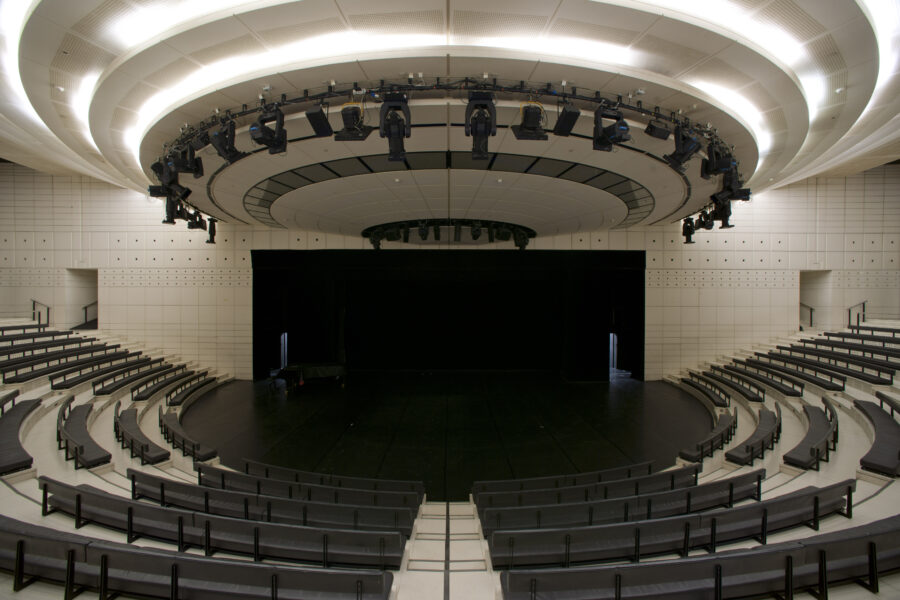
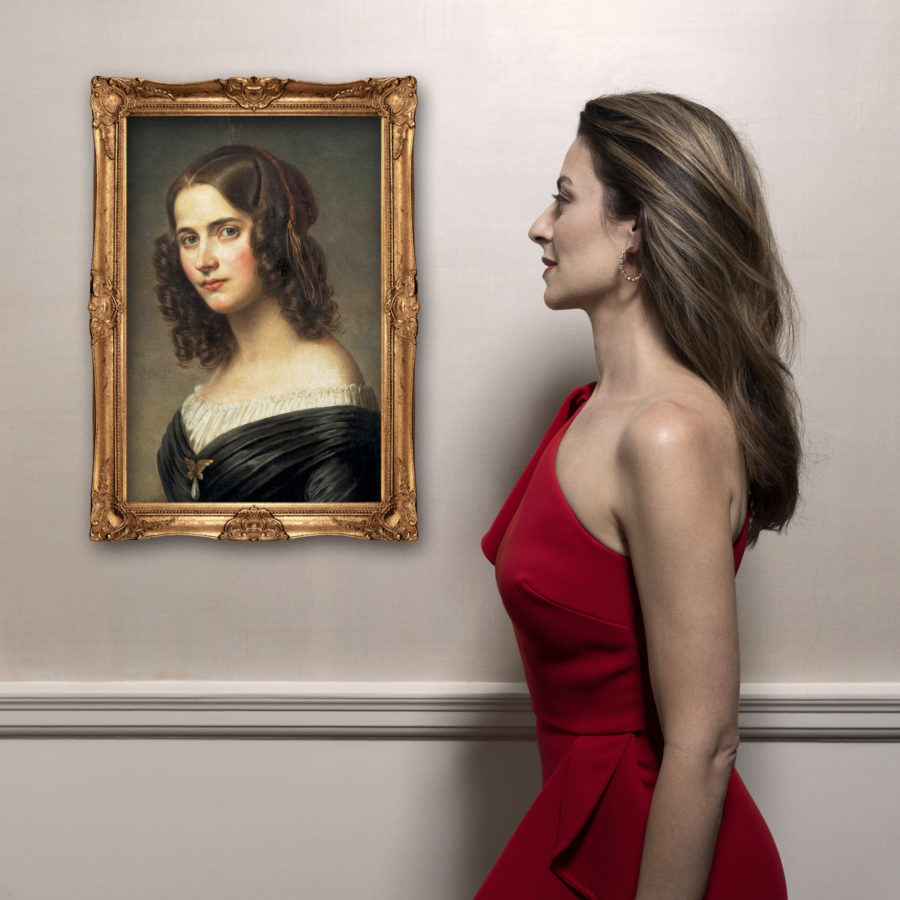
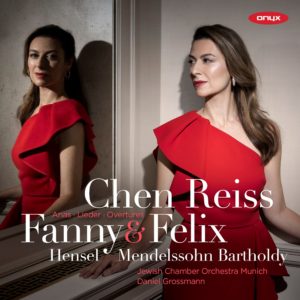 Acknowledging the various roles Hensel fulfilled in life allows one to more fully engage in her art, and to contemplate the whys, wherefores, and hows inherent to her creative process. Thus might one build an understanding, of not only her body of works, but the uniquely creative elements at play within them. Elements of the past (Bach, Beethoven, Schubert), contemporaneous (Schumann, Liszt), and future (Brahms, Liszt) intermingle in some thoughtful ways, and one senses, especially in her later works, a through-compositional style that would’ve found fulsome expression on the opera stage, a medium for which she would have been eminently suited. Soprano Chen Reiss agrees on this point, and brings her own beguiling brand of elegant, operatic flair to a new album. Fanny Hensel & Felix Mendelssohn: Arias, Lieder & Overtures (
Acknowledging the various roles Hensel fulfilled in life allows one to more fully engage in her art, and to contemplate the whys, wherefores, and hows inherent to her creative process. Thus might one build an understanding, of not only her body of works, but the uniquely creative elements at play within them. Elements of the past (Bach, Beethoven, Schubert), contemporaneous (Schumann, Liszt), and future (Brahms, Liszt) intermingle in some thoughtful ways, and one senses, especially in her later works, a through-compositional style that would’ve found fulsome expression on the opera stage, a medium for which she would have been eminently suited. Soprano Chen Reiss agrees on this point, and brings her own beguiling brand of elegant, operatic flair to a new album. Fanny Hensel & Felix Mendelssohn: Arias, Lieder & Overtures (

